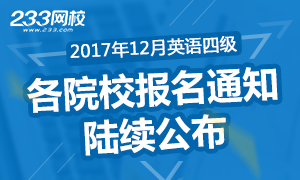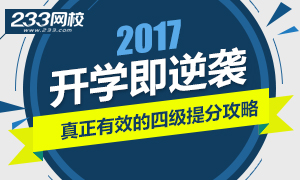2005年6月18日CET4試題及答案
Consumers are being confused and misled by the hodge-podge (大雜燴) of environmental claims made by household products, according to a "green labeling" study published by Consumers International Friday .
Among the report's more outrageous (令人無法容忍的) findings-a German fertilizer described itself as " earthworm friendly" a brand of flour said it was "non-polluting" and a British toilet paper claimed to be "environmentally friendlier"
The study was written and researched by Britain's National Consumer Council (NCC) for lobby group Consumer International. It was funded by the German and Dutch governments and the European Commission.
" While many good and useful claims are being made , it is clear there is a long way to go in ensuring shoppers are adequately informed about the environmental impact of products they buy," said Consumers International director Anna Fielder .
The 10-country study surveyed product packaging in Britain. Western Europe, Scandinavia and the United States. It found that products sold in Germany and the United Kingdom made the most environmental claims on average.
The report focused on claims made by specific products , such as detergent (洗滌劑) insect sprays and by some garden products . It did not test the claims, but compared them to labeling guidelines set by the International Standards Organization (ISO) in September, 1999.
Researchers documented claims of environmental friendliness made by about 2,000 products and found many too vague or too misleading to meet ISO standards.
"Many products had specially-designed labels to make them seem environmentally friendly , but in fact many of these symbols mean nothing," said report researcher Philip Page .
"Laundry detergents made the most number of claims with 158. Household cleaners were second with 145 separate claims. While paints were third on our list with 73. The high numbers show how very confusing it must be for consumers to sort the true from the misleading." he said .
The ISO labeling standards ban vague or misleading claims on product packaging, because terms such as "environmentally friendly" and "non-polluting" cannot be verified." what we are now pushing for is to have multinational corporations meet the standards set by the ISO." said Page.
31. According to the passage, the NCC found it outrageous that ______
A) all the products surveyed claim to meet ISO standards
B) the claims made by products are often unclear or deceiving
C) consumers would believe many of the manufactures' claim
D) few products actually prove to be environment friendly
32. As indicated in this passage, with so many good claims, the consumers _____
A) are becoming more cautious about the products they are going to buy
B) are still not willing to pay more for products with green labeling
C) are becoming more aware of the effects different products have on the environment
D) still do not know the exact impact of different products on the environment
33. A study was carried out by Britain's NCC to _______
A) find out how many claims made by products fail to meet environmental standards
B) inform the consumers of the environmental impact of the products they buy
C) examine claims made by products against ISO standards
D) revise the guidelines set by the International Standards Organization
34. What is one of the consequences caused by the many claims of household products?
A) They are likely to lead to serious environmental problems
B) Consumers find it difficult to tell the true from the false
C) They could arouse widespread anger among consumer
D) Consumers will be tempted to buy products they don't need
35. It can be inferred from the passage that the lobby group Consumer International wants to _______.
A) make product labeling satisfy ISO requirements
B) see all household products meet environmental standards
C) warn consumers of the danger of so-called green products
D) verify the efforts of non-polluting products
| ?γ??????? | ??? | ???/???? | ??????? | ???? |
|---|---|---|---|---|
| ????????????????????????????????? | ????? | ??100 / ??100 |  |
???? |
| ???????????????????????? | ????? | ??100 / ??100 |  |
???? |
| ???????????????????????? | ????? | ??100 / ??100 |  |
???? |
| ??????????????????д???? | ????? | ??100 / ??100 |  |
???? |







